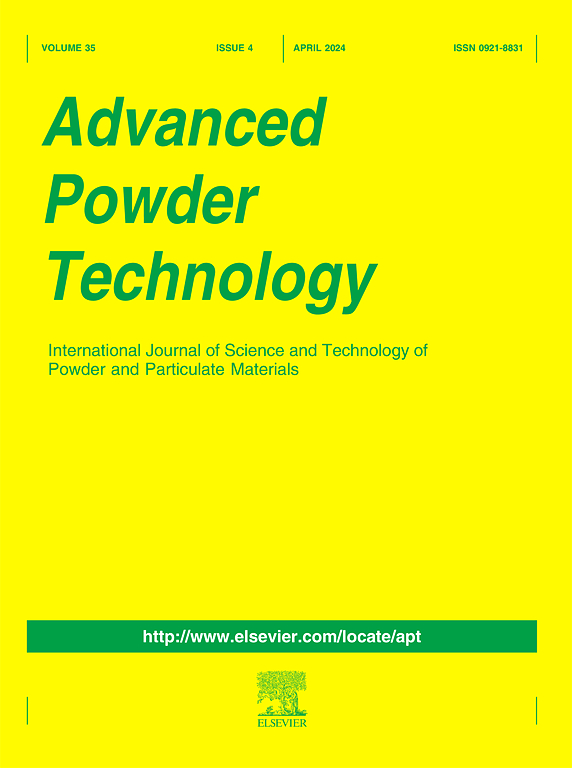In-house processing and characterisation of bioresorbable Mg-Sr / Ca alloy Powders: The effects of powder size / morphology and composition on densification
IF 4.2
2区 工程技术
Q2 ENGINEERING, CHEMICAL
引用次数: 0
Abstract
Low-temperature additive manufacturing (AM) technologies can reduce the safety risks of magnesium (Mg) alloys for producing patient-specific bioresorbable bone implants, however, the sinterability of Mg-based alloys, which control the resultant properties, is ambiguous. The characteristics of Mg-based powder feedstock are critical for the densification of the low-temperature AM fabricated parts through the sintering process. In this study, we have processed and characterised Mg-based powder in-house using cryo-milling of Mg turnings obtained from castings. The effects of size / morphology of in-house processed Mg-Sr / Ca-based powder on sinterability were investigated using Powder Metallurgy (PM). It was determined that the highest densification (i.e., 98.15 %) was achieved by using the lowest Sr / Ca ratio with a narrow solidification range (∼ 4 °C). Broader particle size distribution also enhanced green part compaction. The role of liquid-phase sintering (LPS) process on the densification was also analysed by changing Sr / Ca ratio in the powder mixture.

生物可吸收Mg-Sr / Ca合金粉末的内部加工和表征:粉末尺寸/形貌和成分对致密化的影响
低温增材制造(AM)技术可以降低镁(Mg)合金用于生产患者特异性生物可吸收骨植入物的安全风险,然而,控制最终性能的镁基合金的烧结性尚不明确。镁基粉末原料的特性对低温增材制造零件烧结过程的致密化至关重要。在这项研究中,我们利用从铸件中获得的Mg车削进行低温铣削,在内部加工和表征了Mg基粉末。采用粉末冶金技术研究了内部加工的Mg-Sr / ca基粉末的尺寸和形貌对烧结性能的影响。结果表明,在较窄的凝固范围(~ 4°C)下,使用最低的Sr / Ca比可以达到最高的致密化(即98.15%)。更宽的粒径分布也增强了生坯的压实。通过改变粉末混合物中Sr / Ca的比值,分析了液相烧结(LPS)工艺对粉末致密化的影响。
本文章由计算机程序翻译,如有差异,请以英文原文为准。
求助全文
约1分钟内获得全文
求助全文
来源期刊

Advanced Powder Technology
工程技术-工程:化工
CiteScore
9.50
自引率
7.70%
发文量
424
审稿时长
55 days
期刊介绍:
The aim of Advanced Powder Technology is to meet the demand for an international journal that integrates all aspects of science and technology research on powder and particulate materials. The journal fulfills this purpose by publishing original research papers, rapid communications, reviews, and translated articles by prominent researchers worldwide.
The editorial work of Advanced Powder Technology, which was founded as the International Journal of the Society of Powder Technology, Japan, is now shared by distinguished board members, who operate in a unique framework designed to respond to the increasing global demand for articles on not only powder and particles, but also on various materials produced from them.
Advanced Powder Technology covers various areas, but a discussion of powder and particles is required in articles. Topics include: Production of powder and particulate materials in gases and liquids(nanoparticles, fine ceramics, pharmaceuticals, novel functional materials, etc.); Aerosol and colloidal processing; Powder and particle characterization; Dynamics and phenomena; Calculation and simulation (CFD, DEM, Monte Carlo method, population balance, etc.); Measurement and control of powder processes; Particle modification; Comminution; Powder handling and operations (storage, transport, granulation, separation, fluidization, etc.)
 求助内容:
求助内容: 应助结果提醒方式:
应助结果提醒方式:


